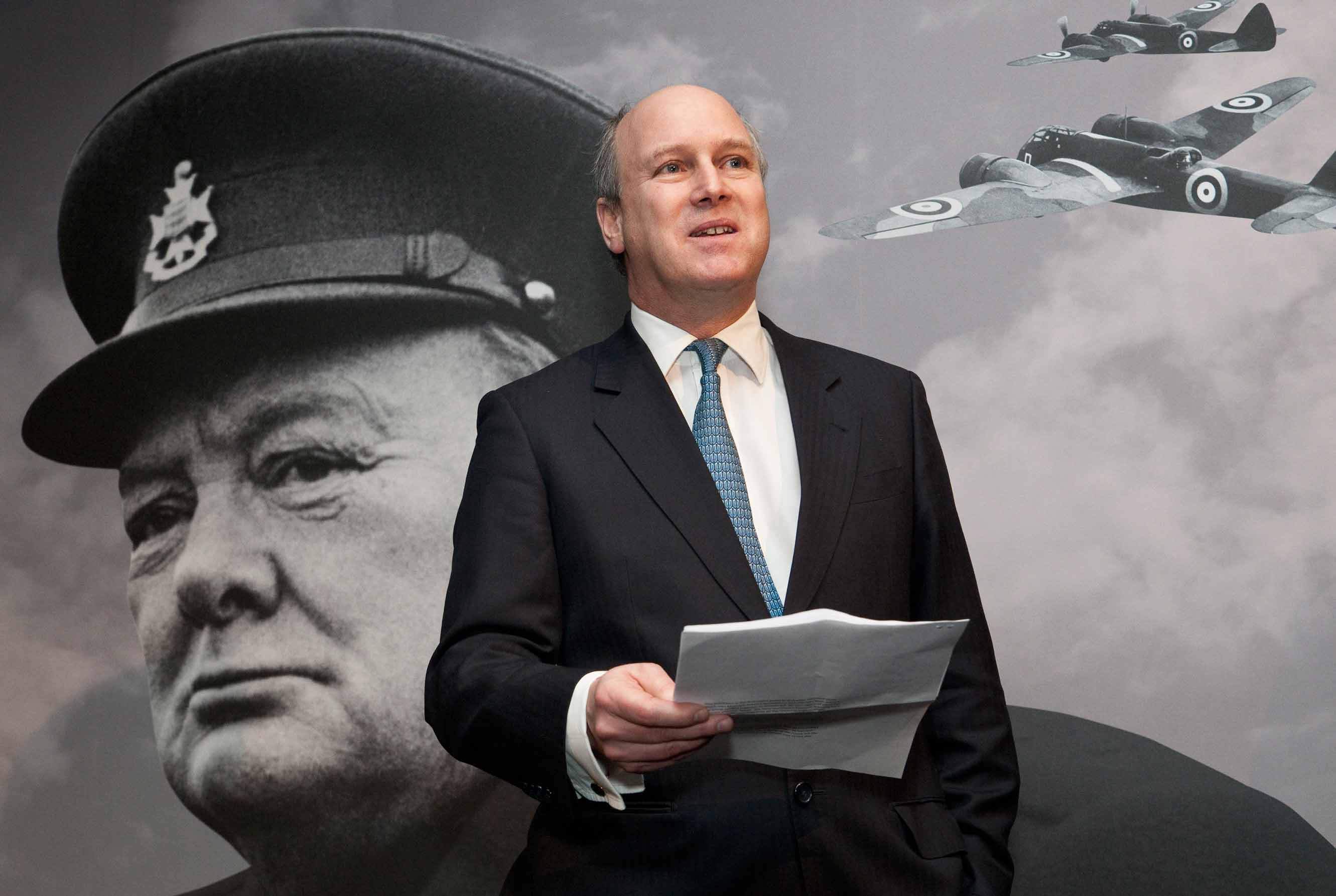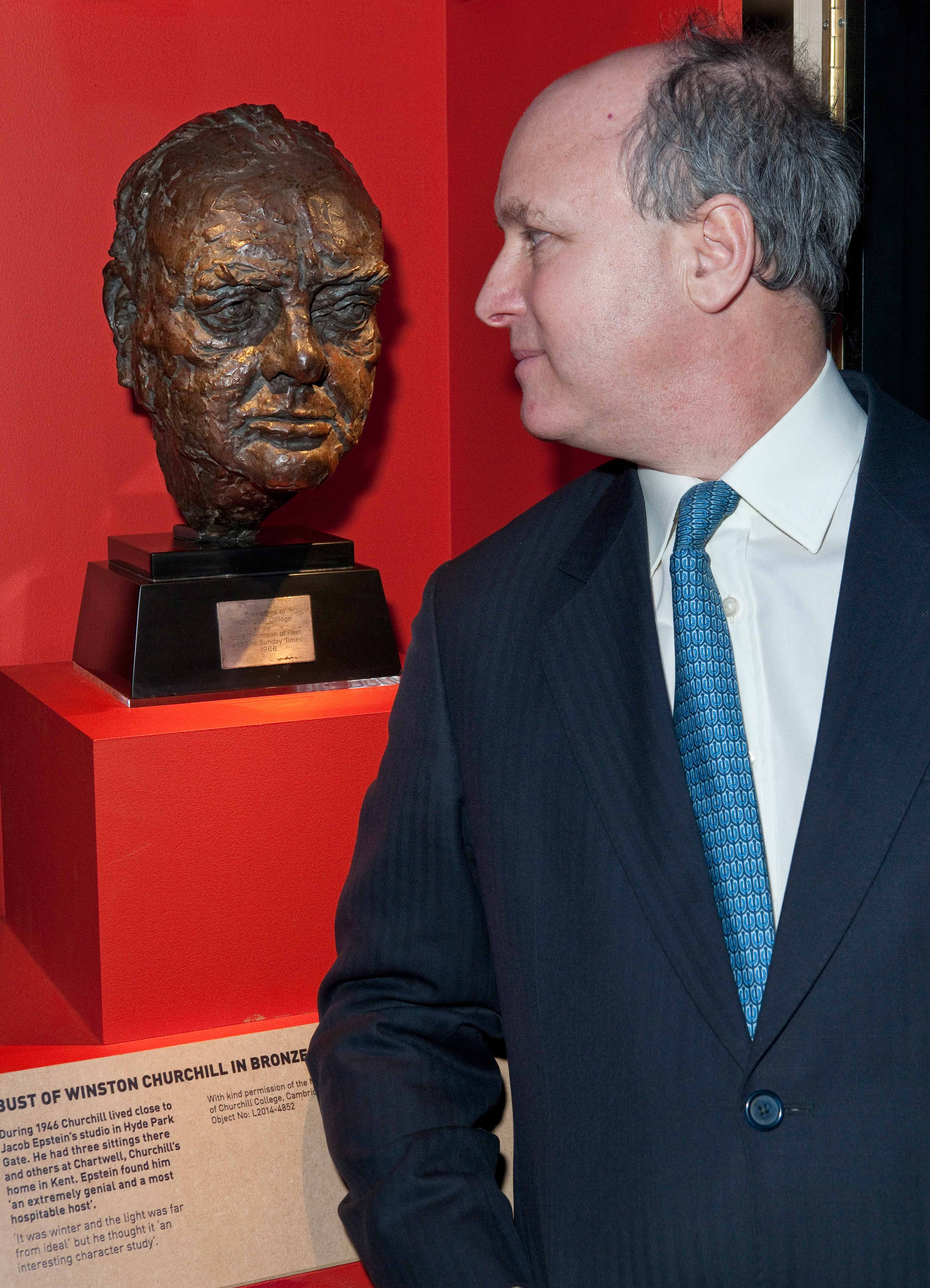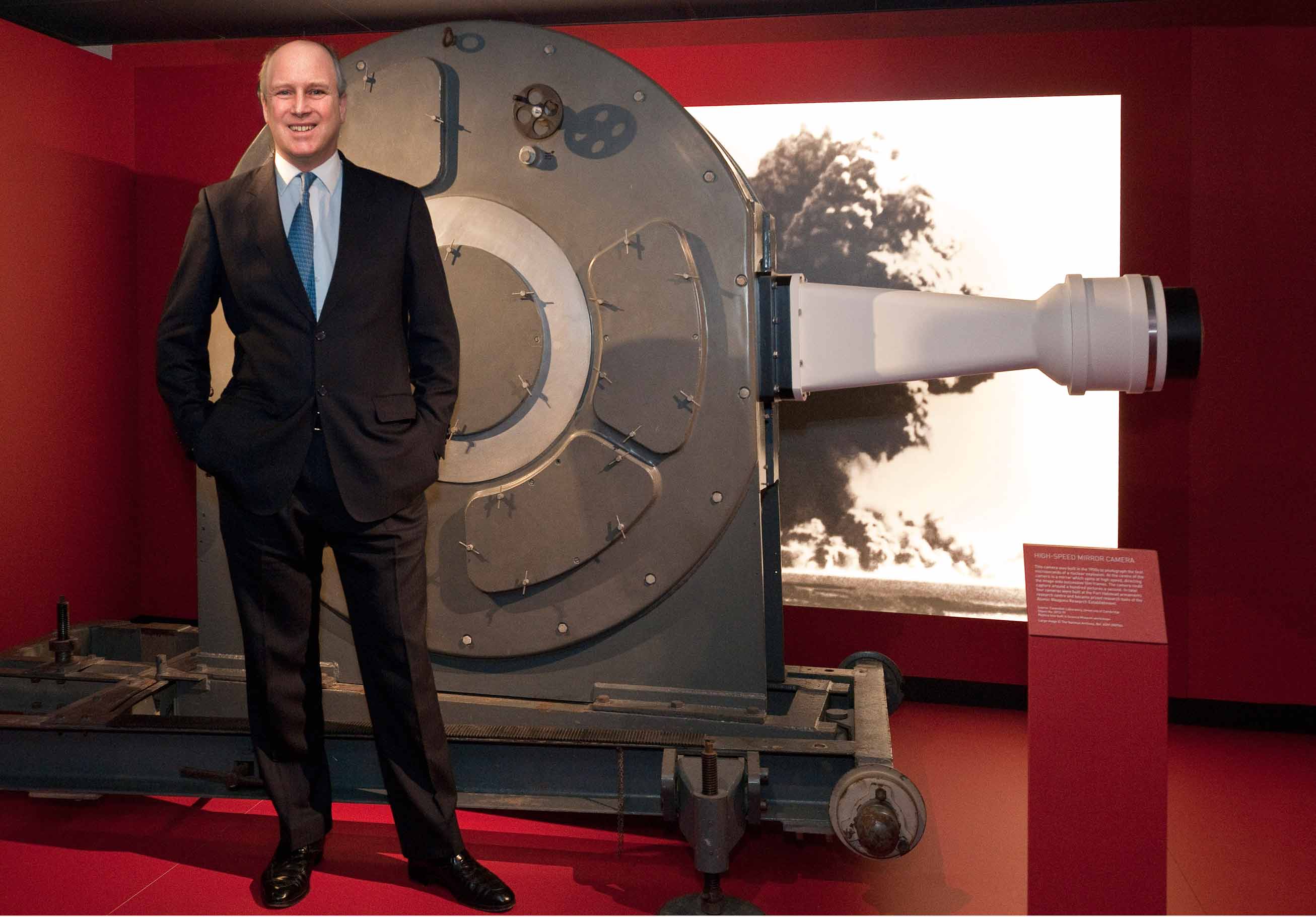‘Science isn’t a word most people associate with my great-grandfather’ said Randolph Churchill, standing in front of an imposing image of his iconic relative as he addressed journalists at the press preview of Churchill’s Scientists.

The exhibition opened to the public today on the eve of the 50th anniversary of Sir Winston Churchill’s death. It celebrates a crucial, but often overlooked element of Churchill’s life and legacy – his relationship with science and the incredible breakthroughs that he championed during his time as Prime Minister, during the Second World War and post-war era.
Randolph told the audience that his great-grandfather had been fascinated with science from a young age. He lived through an age of great technological change, which saw the development of flight, electronics, atomic physics, telephones and televisions, mass consumerism and mass destruction.
He spoke of Sir Winston’s passion for aviation and how he was probably the first Government minister to learn how to fly, at a time when the sport was still considered highly dangerous. This story is brought to life in the exhibition through the display of a model aeroplane.

Randolph also read an extract from a prescient 1924 essay by his great-grandfather that highlighted Churchill’s acute awareness of both the creative and destructive potential of science. The essay speculates about “a bomb no bigger than an orange” with “the secret power to destroy a whole block of buildings – nay to concentrate the force of a thousand tons of cordite and blast a township at a stroke”.

Churchill’s Scientists illuminates other aspects of Churchill’s life including his love of fashion, shown in the display of a green velvet ‘siren suit’ – an all-in-one ‘romper suit’ which bears strong resemblance to the ‘onesie’. At the heart of the exhibition are the stories of the individuals who flourished under Churchill’s patronage, from Robert Watson-Watt, inventor of radar, to Bernard Lovell who created the world’s largest radio telescope, told through unique objects, original archive film footage, letters and photographs.

The exhibition forms part of Churchill 2015, a year-long programme of events that commemorate Churchill’s life, work and achievements.
The exhibition is supported by players of People’s Postcode Lottery, The Stanley Foundation and The de Laszlo Foundation. The exhibition is free and runs until March 2016.